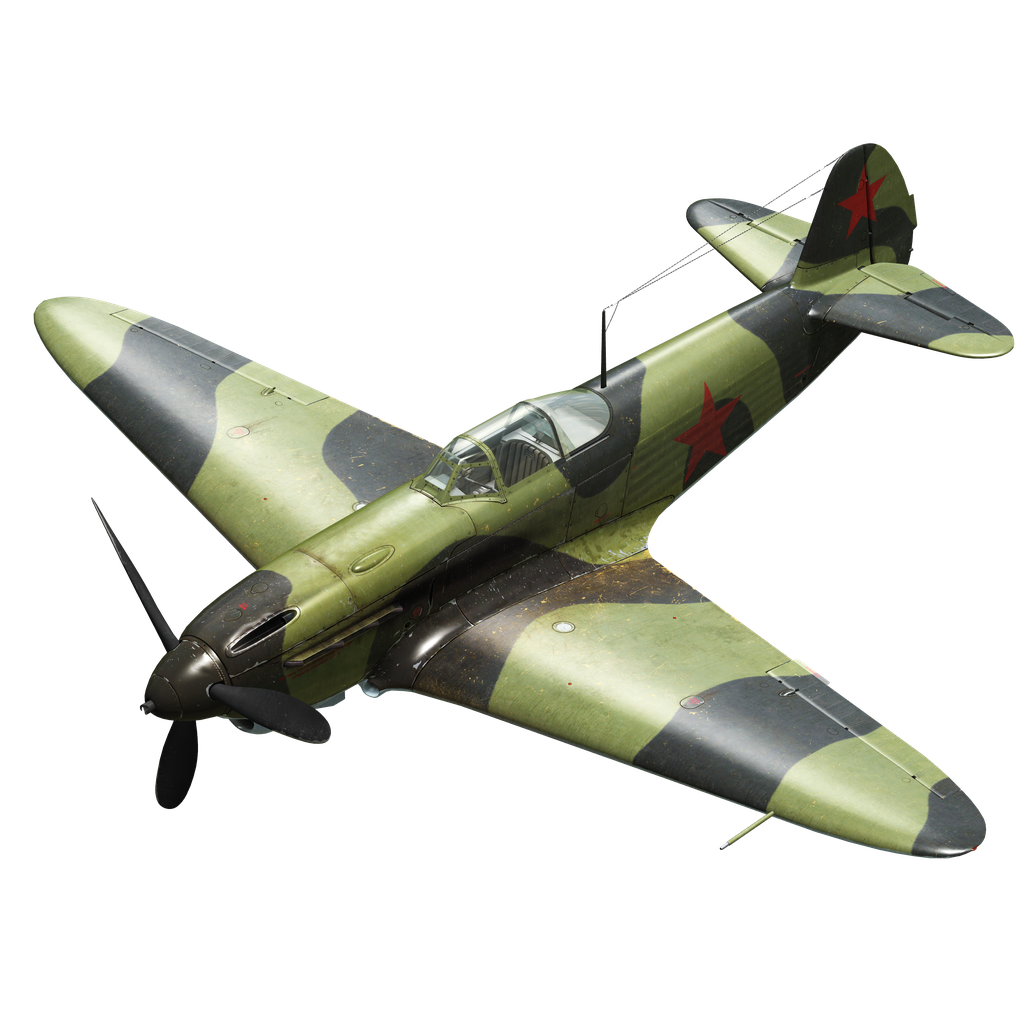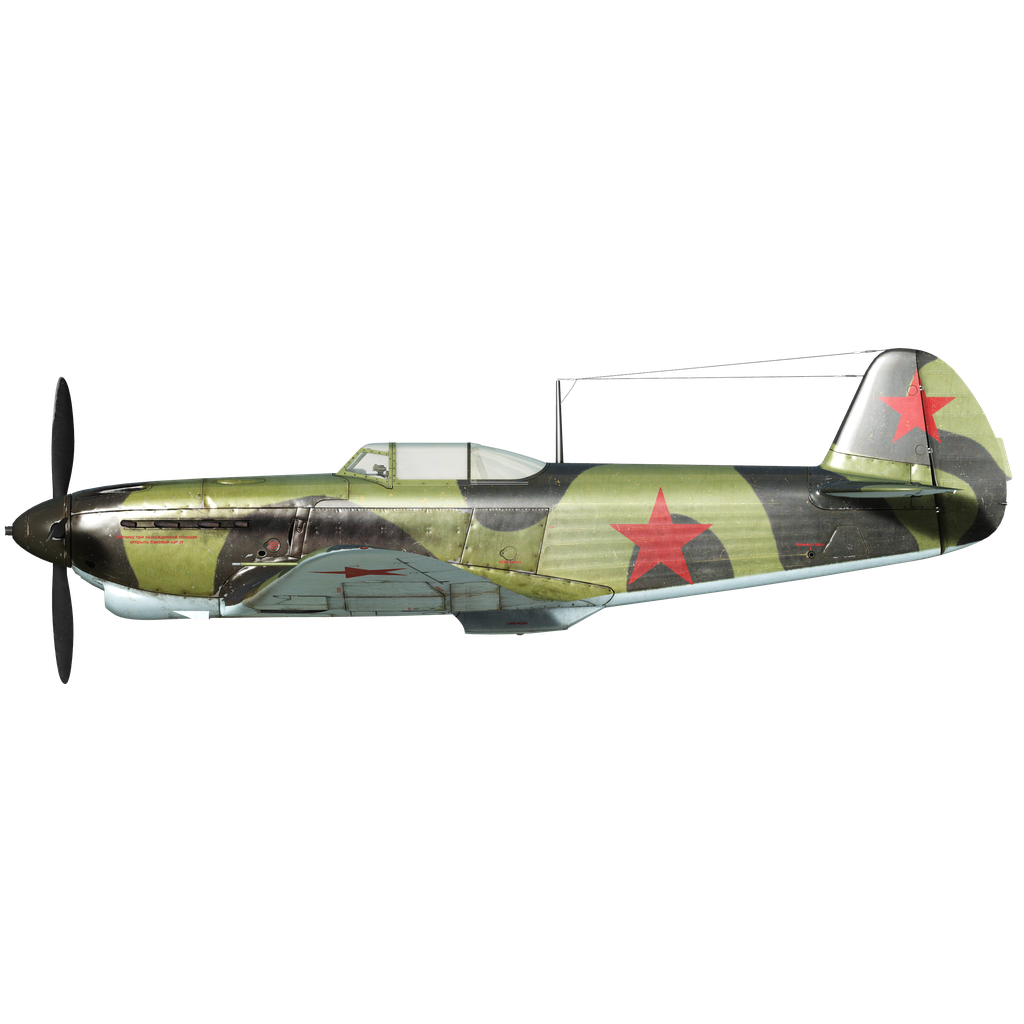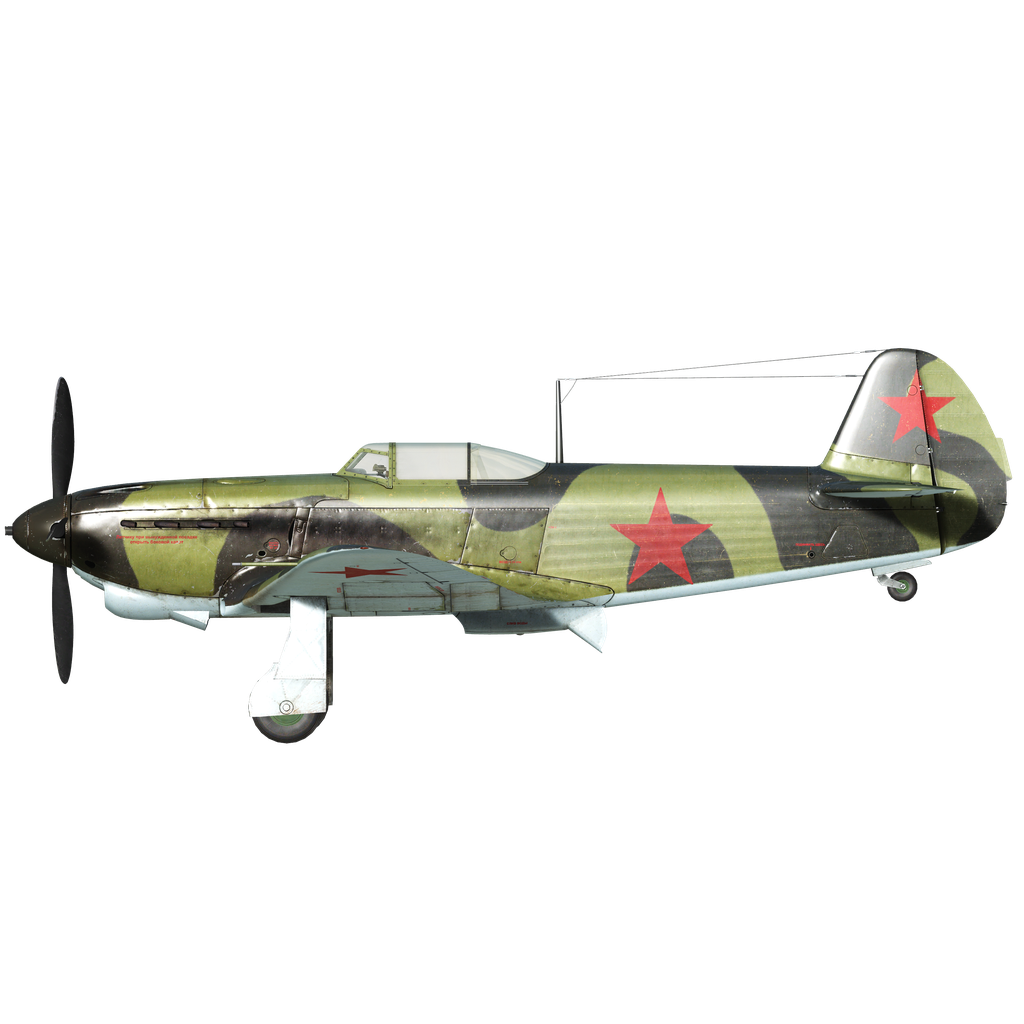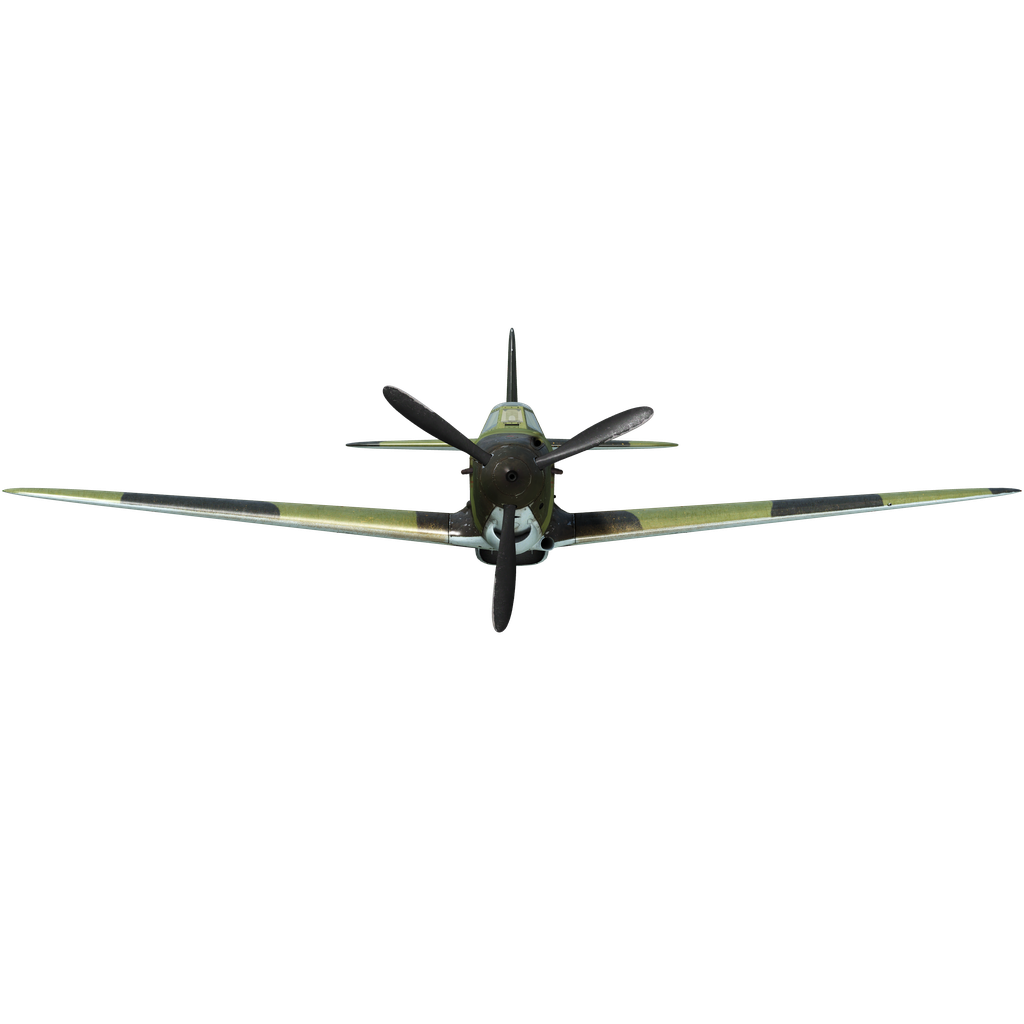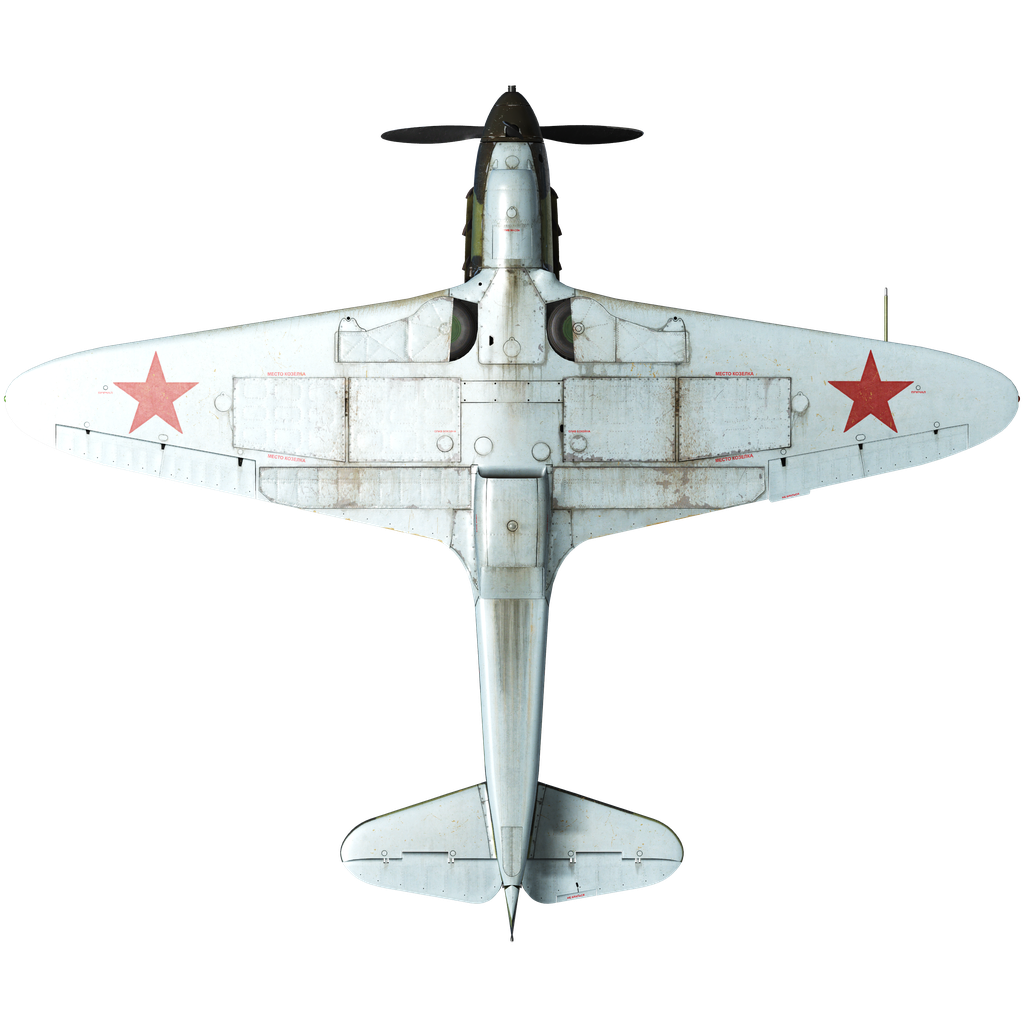The design bureau of the Deputy People's Commissar for the Aircraft Industry Yakovlev was among those involved in creating a new generation of combat aircraft in the USSR, working on the I-26 project. The specialization of the design bureau, which had previously created sport aircraft, had a positive impact on the project. The fighter was to have high speed and maneuverability thanks to efficient aerodynamic design and a rational layout with all large masses near the center of gravity.
The prototype flew for the first time on January 13, 1940 and turned out to be "crude": the tests were accompanied by continuous failures, accidents, and even disasters. If Yakovlev had not been a deputy people's commissar, the story of this fighter would probably have ended at the factory testing stage, but due to the use of administrative resources, the aircraft, which was given the name Yak-1, not only entered state tests, but in 1940 was put into mass production even before they were carried out. As a result, it had several major defects, which, however, did not change its overall high rating. During production, the design was continually modified to reflect combat experience.
Serial production of the improved modification of the Yak-1B began in 1942 and ended only in June 1944: in September 1942, 10 aircraft were produced, and from October only the Yak-1B was produced.
The Yak-1B was a single-seat front-line fighter monoplane with a low wing of wooden construction and a retractable two-strut landing gear with a tail wheel that was also retractable. Some equipment was removed from the aircraft to lighten the structure, and internal sealing of the fuselage compartments was introduced. The fuselage was mounted on a welded metal frame that was integral with the engine mount.
Unlike earlier modifications, the cockpit canopy was teardrop-shaped, behind which the fuselage was cut down: this greatly improved visibility, especially to the rear. To prevent the canopy from being splashed with oil from the engine, which was a common problem, an oil deflector was installed. The protection of the pilot was improved by the installation of armored glass in front and behind his head.
The water-cooled M-105PF engine remained the same, but the propeller was replaced by a three-blade VISH-105 SV. The engine developed 1240 shp at takeoff and 1200 shp at an altitude of 4000 m.
The armament still included a 20 mm cannon mounted in the camber of the engine cylinder block, firing through the hollow shaft and propeller transmission, and the rifle-caliber machine guns were replaced by a large-caliber UBS machine gun above the left engine. Racks for two bombs of 50 or 100 kg could be fitted under the wings.
A total of 4,188 Yak-1b were built. Yak-1b series 127 appeared at the front in the spring of 1943.
Many famous Soviet aces flew the Yak-1b: Arseny Vorozheikin, Alexander Koldunov, Alexey Alelyukhin, Sergey Lugansky, and others; these fighters were also in service with the Normandy Squadron.
Transferred to the 296th Fighter Aviation Regiment (later 73rd Guards IAP), the famous pilot Lydia Litvyak flew the Yak-1B before being killed in action. Her call sign was "Lily" and a white lily was painted on her plane, so she went down in history as the “White Lily of Stalingrad.”
Although the Yak-1b was becoming obsolete and could not compete with the new modifications of the Messerschmitts and Focke-Wulfs, pilots and technicians still loved it. Despite the changes in design, it retained its simplicity and ease of operation and remained straightforward in maintenance.
Used sources:
V. Shavrov “History of aircraft designs in the USSR 1938-1950.” 1988
M. Nikolsky “Yak-fighter” Aviation and Cosmonautics magazine No. 5-5 1999
Materials from the site airwar.ru
